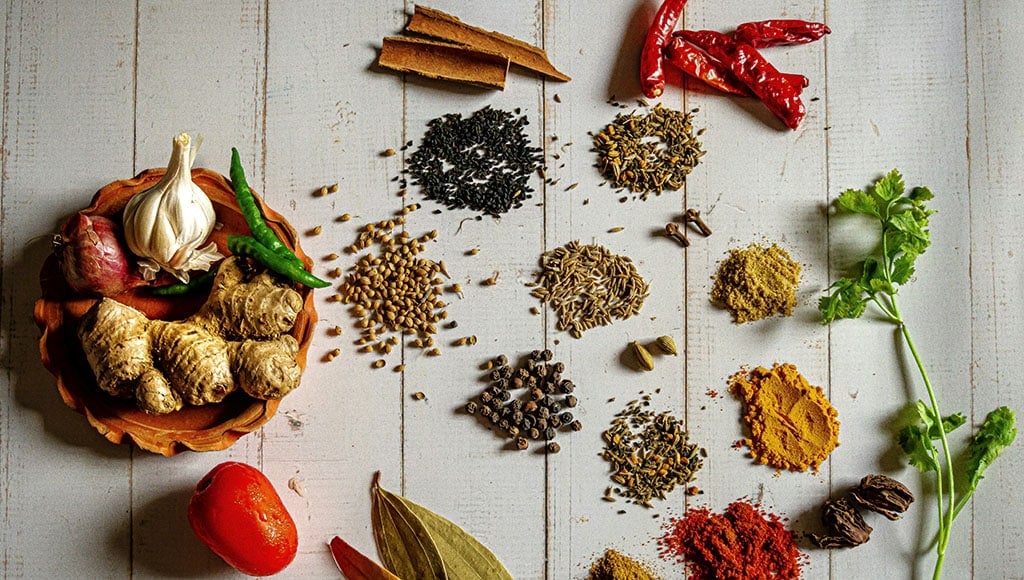People who are not familiar with Indian food tend to club all the aromatic and exotic-looking fragrant dishes under one broad nomenclature and call it ‘curry’. However, any self-respecting chef from the Indian sub-continent would beg to differ.
Vehemently so! And that is because not only do special ingredients go into the making of each one of them but also the same food can be made to taste differently by altering the presence, or absence, of the spices that go into it.
Many of us love spices but do not know how to unlock their full potential. And here is where garnishing comes in, which is called “tadka” in the Hindi. The word itself conjures up images of such delicious aromas that one does not even have to be familiar with the process to imagine it.
The technique is that whole or ground spices are momentarily roasted in oil or ghee (clarified butter) in order to release their essential oils, which are then poured over the dish – where it produces a loud hissing sound. The food is only then considered suitably garnished and ready to be served.
As an aside, my pet peeve these days is to check the blunder that writers make in the usage of ‘its’ or ‘it’s’, which are two different words, and cannot be used interchangeably. Never! Nunca! That is because ‘it’s’ is a contraction of ‘it is’ and ‘its’ is something that the subject possesses, so to use an example, “it’s an unfriendly dog but keeps wagging its tail.”
Right! Now to get back to the garnishing of Indian food, the seasoning that goes into it can vary from region to region. In the eastern part of India, for instance, there are five primary spices, called the ‘paanch phoran’, comprising of fennel seeds, cumin seeds, mustard seeds, nigella seeds and fenugreek seeds that are used in the ‘tadka’. In the southern part of the country, curry leaves and dried red chilies are also included.
Also, the order in which the spices are added are done in rapid succession, with those that require longer roasting added earlier than the ones that get cooked quickly. When mixed in very hot oil, the spices begin to splatter and the sizzling oil can burn the ‘tadka’, and once that happens, there is no way of saving it other than starting all over again.
Meanwhile, whether to add or avoid asafoetida in the ‘tadka’ is what gives most cooks sleepless nights. This potent smelling spice is referred to as Devil’s Dung because of its stinging odour and gets its name from the Persian word “aza” and the Latin word “foetida”, referring to its strange sulfurous stench. In Indian herbal medicine Ayurveda, asafoetida is used to stimulate appetite and digestion and to help neutralize flatulence caused by beans and other legumes.
Recently, we were having dinner at a fancy new Indian restaurant in Lisbon with some Portuguese friends. Soon, the topic of pungent spices came up and they turned towards me for explanation.
“It is called Heeng in Hindi”, I said, explaining the importance of asafoetida.
“One must use just a pinch of it. That’s all”, said Raj, their chef, who had walked up to our table.
“What happens if we add more?” my husband asked.
“There will be consequences”, he warned.
“What kind of consequences?” spouse asked.
I started laughing.
My husband looked puzzled.
“Of the flatulent bombastic kind”, chef cautioned politely.
By Nickunj Malik
|| features@portugalresident.com
Nickunj Malik’s journalistic career began when she walked into the office of Khaleej Times newspaper in Dubai thirty-one years ago and got the job. Since then, her articles have appeared in various newspapers all over the world. She now resides in Portugal and is married to a banker who loves numbers more than words.

























